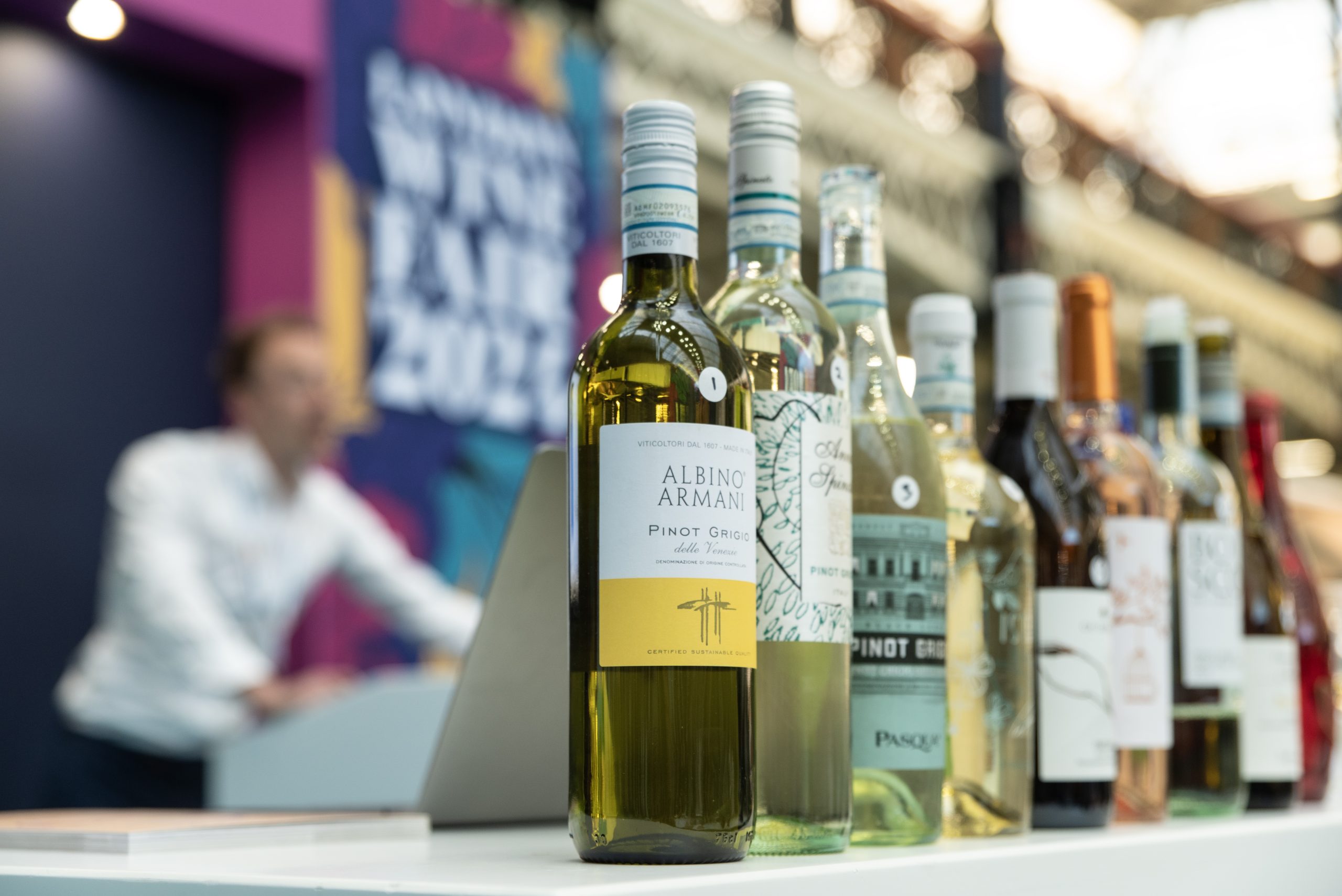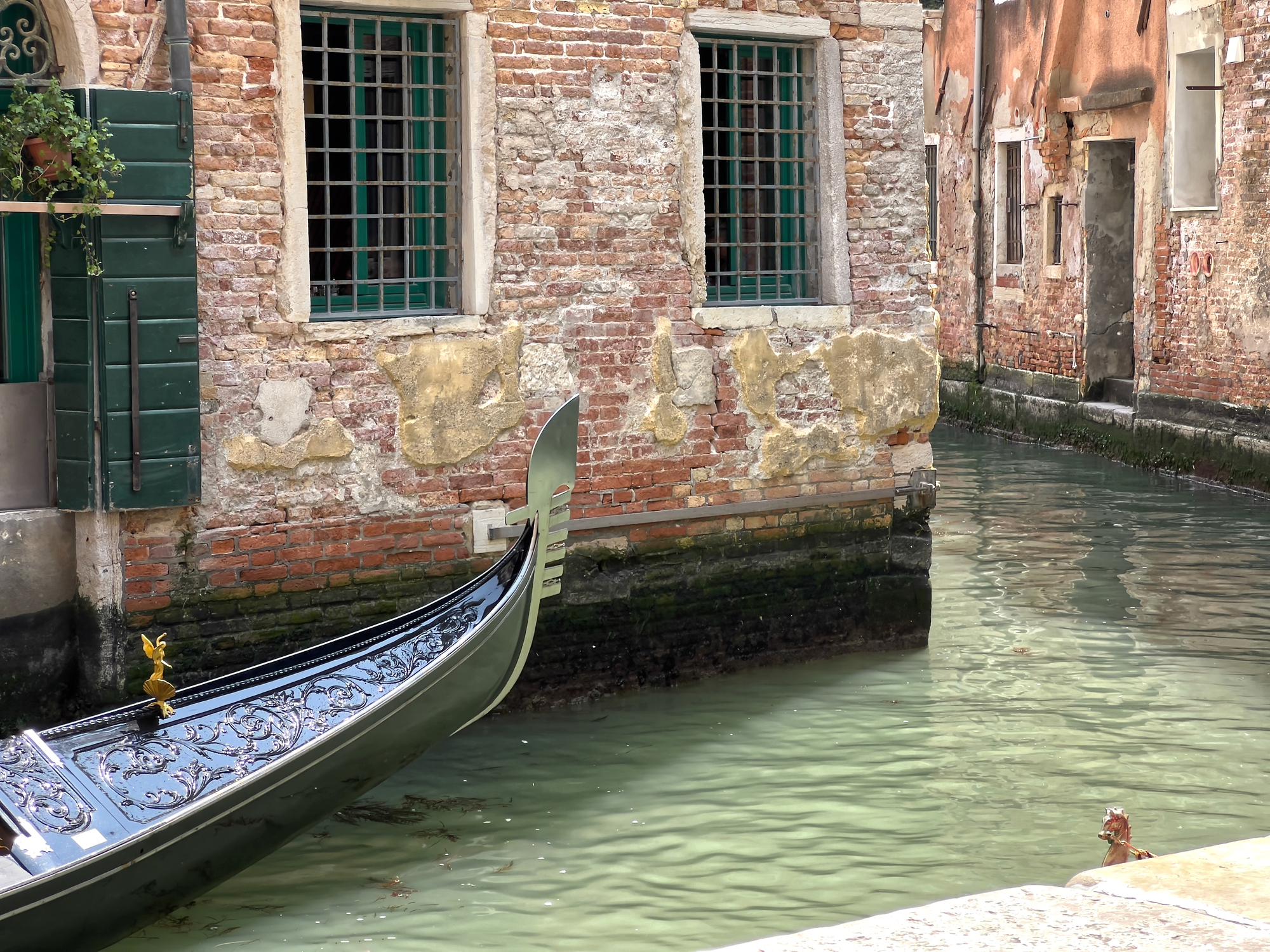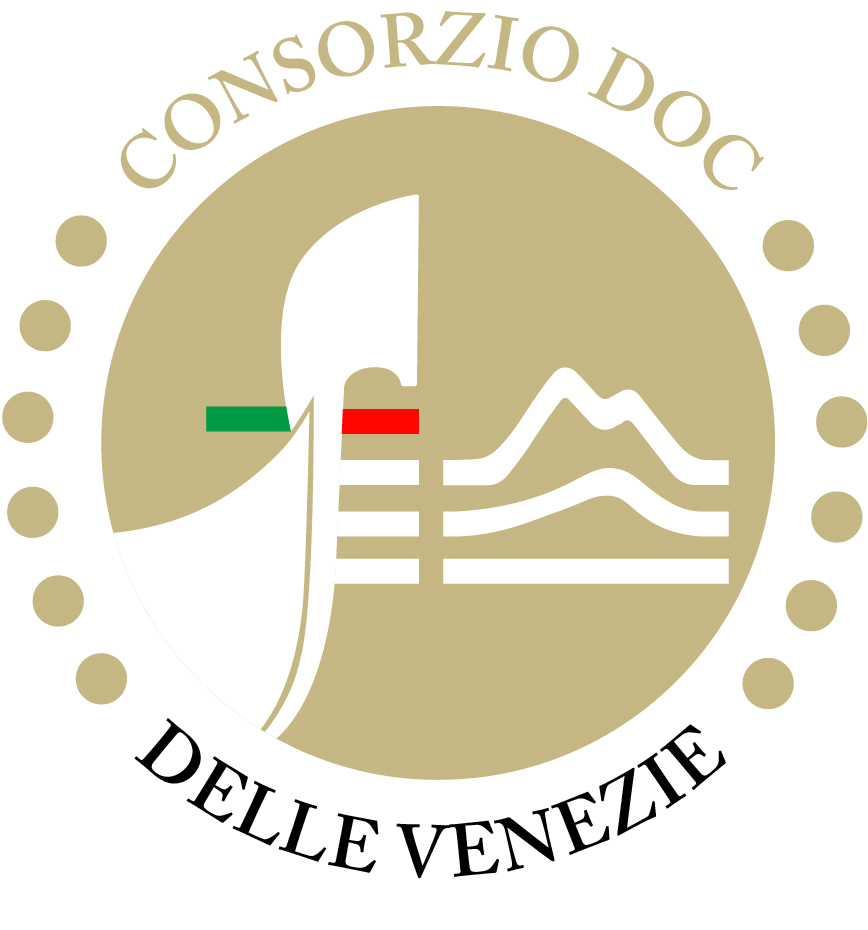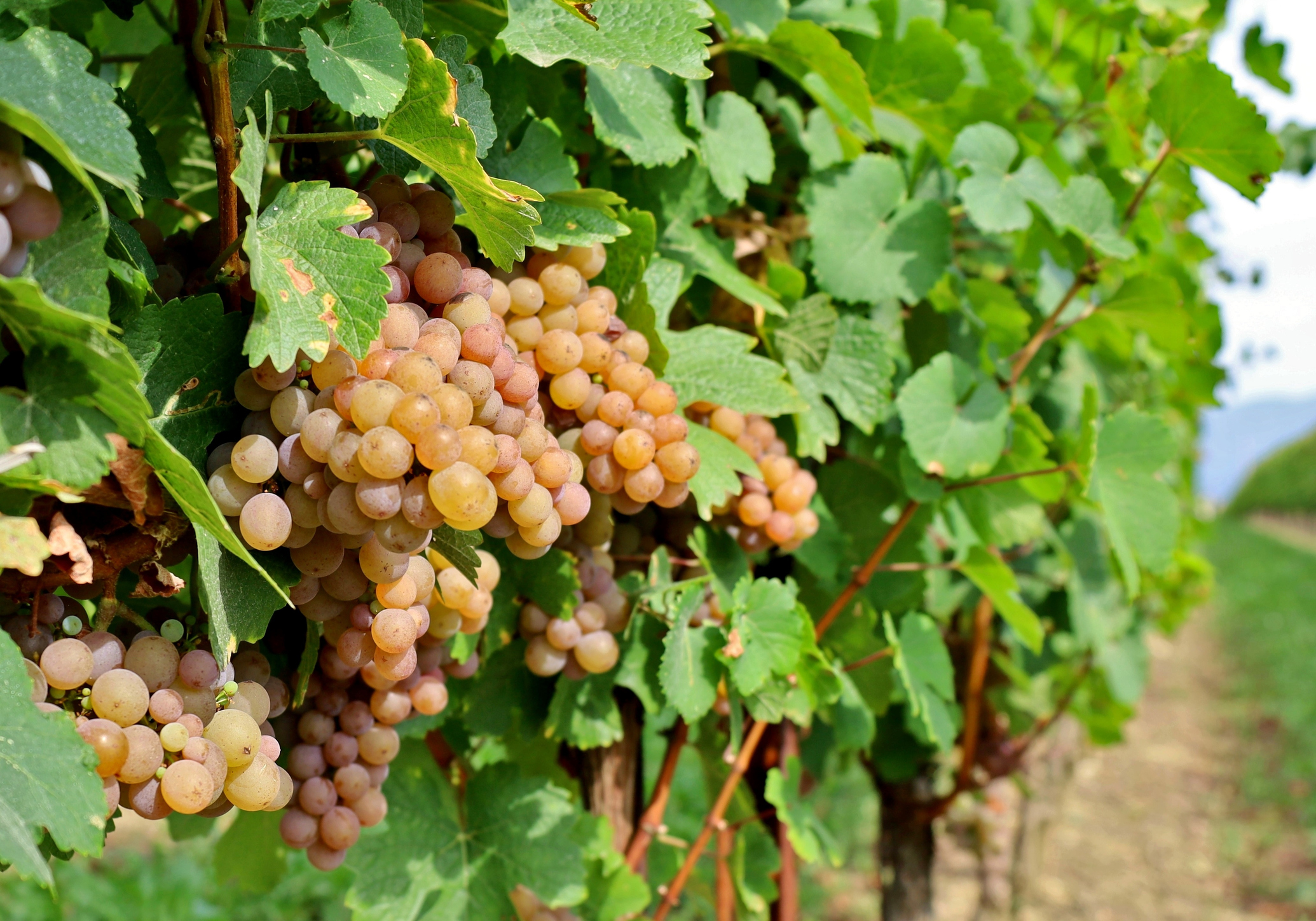Pinot Grigio Delle Venezie demonstrates market potential
Patrick Schmitt MW explored Delle Venezie’s international standing at the “most commercially important masterclass” of the London Wine Fair.

Taking the stage in the middle of a buzzing London Wine Fair, Patrick Schmitt MW had plenty to tell the buyers, writers and distributors who filled the auditorium. With eight wines readied in front of them, the attendees had an hour for an in-depth exploration of Pinot Grigio Delle Venezie DOC.
The experience, however, was not just for them. The tasting theatre, in the centre of Olympia’s exhibition hall, was open to the rest of the fair, allowing visitors to dip into the masterclass, even if they could not taste the wines.
Nothing could be more appropriate for the DOC: Pinot Grigio Delle Venezie wines are not intended to be exclusive or niche. Indeed, a recurring theme of the masterclass was the denomination’s broad appeal and accessibility to all. These are not wines, it seemed to say, to be hidden away for a select few in a side room. Through a compelling commercial proposition, a carefully curated brand and the quality to back them up, Pinot Grigio Delle Venezie wines earned their time taking centre stage.
Cornering the market
Schmitt opened his masterclass with a bold claim: “This is probably the most commercially important masterclass of the fair.” Much though the wine trade thrives on diversity and the thrill of discovering the next big thing, it is hard to argue against Pinot Grigio Delle Venezie’s commercial importance. Its market performance is one of the great success stories of the last two decades.
Its raw production is certainly impressive. Covering a large area of northeast Italy, the DOC produces around 200 million bottles of Pinot Grigio every year. To compare it to another behemoth region, and one that has similarly capitalised on a distinctive brand, that is around two-thirds of the annual production of Champagne. It means that, of the world’s supply of Pinot Grigio and Pinot Gris, around 40% is produced in that one region of Italy.
Pinot Grigio Delle Venezie is particularly important as an exported wine. While many Italian styles have limited impact on the global stage, Pinot Grigio has become an international success. Only 4% of Pinot Grigio Delle Venezie is consumed in Italy, the rest being distributed all over the world. It is Italy’s second-largest wine region by export volume; the only region to export more is, unsurprisingly, Prosecco.
The leading importer is the US, which is the destination for 37% of Pinot Grigio Delle Venezie. There was, however, good reason to promote the region at the London Wine Fair. Arriving in second place in the rankings, the UK consumes 27% of the DOC’s production.
That reflects a strong market in the UK for Pinot Grigio. Behind only Sauvignon Blanc and Chardonnay, Pinot Grigio is now the UK’s third most popular white wine variety. Annual consumption is around 85m bottles, which equates to almost three bottles drunk every second. Although many regions are represented in those figures, Italy dominates the market. Indeed, when trying to summarise Pinot Grigio in the UK market, Schmitt did so in four words: “Basically, Italy and Barefoot.”

Such popularity has several causes. It is undeniably a matter of taste; Pinot Grigio Delle Venezie fits with current trends in the UK market for crisp, refreshing white wines. As a product, however, it also responds to both longstanding and modern market demands.
In terms of simple geography, the DOC is also well-placed to reach the UK market. Compared to New World regions, northeast Italy is on the UK’s doorstep. Even when considering Europe, it is closer than Portugal, Greece and much of Spain and Austria. As recent shipping lane dramas demonstrate, from the 2021 obstruction of the Suez Canal by container ship Ever Given to recent violence in the Red Sea, logistical simplicity is an asset in any export arrangement.
Moreover, Pinot Grigio Delle Venezie has an advantage derived from UK legislation. Duty changes introduced in 2023 have resulted in wines being charged duty on a sliding scale up to 11% ABV, and at a flat rate between 11.5% and 14.5% ABV. This replaced a flat rate up to 15% ABV, and means the most significant jump in duty costs is between 11% and 11.5% ABV. Naturally light, fresh and lower in alcohol, Pinot Grigio Delle Venezie can reach the crucial 11% level more easily than many other regions. This lowers duty costs, which can translate into a competitive advantage.
The Venezie brand

Pinot Grigio Delle Venezie’s strong commercial position has been matched by careful and curated brand building. While it is less than a decade old – the DOC was established in 2017 – it has already developed a strong identity.
That feat is, in itself, remarkable. Certain individual wines stand out in the UK market; one of the country’s top-selling supermarket bottles, for instance, has earned the nickname ‘chicken wine’ among its fans. For specific regions, however, building a unifying brand identity is a significantly tougher challenge.
Schmitt noted that, while red wines are frequently marketed according to their region, it is less common for white wines. Instead of Bordeaux or Rioja, consumers in the UK market are much more likely to recognise a grape variety in buying white wines. Particularly when it is one of those top three varieties, the commercial rewards can be significant.
Schmitt also highlighted the value of regions with historical and cultural significance. Consumers seem more likely to buy into a production zone when it has an existing positive connotation. In a perhaps related phenomenon, he highlighted how regions are emphasising their authenticity by keeping their ties to their native language. Burgundy, for instance, has now been very consciously repositioned as Bourgogne.
With these factors in mind, the marketing choices of Pinot Grigio Delle Venezie DOC seem particularly canny. In referencing the grape variety, consumers have a clear reference point for the style (it must account for at least 85% of a blend, and 100% is common). In referencing the region, it is tied to the traditions and heritage of that corner of Italy.
Although the vineyards are spread over a landscape very different to the city, Venice gives the DOC an emblematic identity. As a city with a global reputation, it allows an immediate point of connection. With connotations of culture, fine food and romance, it is an ideal ambassador for the entire region.
Pinot Grigio Delle Venezie has therefore embraced the city in its branding. In fact, one of Schmitt’s key recommendations was to seek out the distinctive gondola on bottles of Pinot Grigio.
The gondola, or rather the distinctive fèrro ornament found on its prow in Venice, has been the DOC’s logo since 2017. In Venice, the iron adornment acts as a counterweight to the gondolier; on the bottle, the logo’s curve symbolises the canals of Venice, while the six teeth symbolise the six districts of the city. In its logo, as in its name, Pinot Grigio Delle Venezie has positioned itself with a clear identity to appeal to international consumers.
Partner Content

Pinot Grigio Delle Venezie DOC in numbers
• Founded in 2017 as a successor to Delle Venezie IGT
• Covers an area of around 32,000km2 across Friuli-Venezia Giulia, Veneto and Trentino
• Contains 27,000 hectares of DOC eligible vineyards
• Bottled 1,661,384 hectolitres of wine in 2023
• Produces around two-thirds of the Pinot Grigio made in Italy
• Comprised of more than 350 companies, including winemakers, wineries and bottlers
• The top three export markets are the US (37%), the UK (27%) and Germany (10%)
Backed up by quality
Such branding efforts would be irrelevant, however, if not backed up by high-quality winemaking. One key reason for Pinot Grigio Delle Venezie DOC’s success has been that it offers dependable quality at an affordable price. The combination of variety, geography and regulations has protected quality and kept it at the forefront of consumers’ minds.
Pinot Grigio, as is evidenced above, is at the very heart of the appellation. Indeed, the region has revitalised the grape’s image and become its predominant stylistic expression. Schmitt, however, reminded the audience of the variety’s pedigree, which amounts to far more than a recent trend.
As a mutation of Pinot, and therefore technically the same variety as Pinot Noir, Pinot Grigio has a direct relationship with a grape that could be considered the emblematic variety of the fine wine trade. Indeed, the versatility and complexity that define Pinot Noir are also evident in Pinot Grigio.

Under its French name, as the variety is suspected to have originated there, Pinot Gris has a distinguished history in Alsace. Until the 1980s, it was considered the defining grape of the region for fine wine, creating whites with notes of stone fruits, honeysuckle and spice. The admired bottlings of Alsace prove both its fine wine potential and the breadth of its aromatic range.
In northeast Italy, that fine wine reputation is less prominent. It is a region which, as a deliberate choice, has focused on accessible quality rather than exclusive fine wines. Yet the grape’s inherent qualities apply to both. It is aromatically complex, meaning that Italian producers can blend flavours of citrus, orchard fruits, flowers and herbs to their own preferred style. It has a balanced structure, often defined by fresh acidity with added complexity from phenolics on the finish. It is also adaptable – though neutral winemaking is the norm, Pinot Grigio can respond well to lees contact, malolactic conversion and even oak.
Although a large region, the conditions across Pinot Grigio Delle Venezie DOC have key unifying characteristics, and add to the reputation for consistent quality. The Triveneto region shows considerable influence from the Alps and the Mediterranean, two of Europe’s most important geological features.
In broad terms, the region resembles a large amphitheatre facing the Adriatic. To the north, the Alps offer protection from the cooler climates beyond. Crucially, the mountains also create a network of valleys, generating breezes that skim over the vineyards to the sea. The Mediterranean, on the other hand, moderates the climate, ensuring that the growing season is consistently warm, if never scorchingly hot.
The region’s wines, therefore, benefit from a climate that allows consistently ripe grapes at commercially viable yields. Yet they maintain their characteristic acidity thanks to cooler sites and winds running through the vineyards. The conditions ensure a balance between fresh aromas and bright acidity which is vital to the DOC’s appeal. The fact that those conditions apply to a broad area, well-suited to agriculture, means that quality and value can co-exist.
With these natural advantages, there has been a concerted effort to protect quality in recent years. At the forefront has been the switch to a DOC in 2017. When previously bottled as IGT Delle Venezie, a less stringent framework, the wines had fewer quality controls. Now, under the DOC framework, quality control measures are legally mandated. This includes maximum permitted yields and minimum alcohol levels in the wines. They are also subject to taste testing, ensuring the wines match the regional style in practice as well as theory.
It is this focus on quality, without sacrificing affordability, that defined the selection of wines chosen for the masterclass. Across eight wines, the audience explored the key headlines for the region: citrus and orchard fruit aromas, delicate profiles and juicy acidity. Yet they also saw the nuances within the category, whether that was subtle breadth from a proportion of oak ageing, a creamy note from lees influence or the character of one of the region’s copper-hued rosés, known locally as ramato.
With plenty to discover in Pinot Grigio Delle Venezie, but a recognisable style to return to, it is little surprise that consumers have fallen for the region. Even now, when it is one of the most recognised wine brands of Italy, consumers are continuing to discover the region. Schmitt’s final piece of advice was to look out for the fèrro when selecting a Pinot Grigio. Though certainly sound advice, the DOC’s immense success would imply that that message is already being heard around the world.

Related news
Behind the label: Alto Adige and the question of language
For the eighth day of Christmas…
'Rare buying opportunities' as fine wine prices hit a five-year floor




